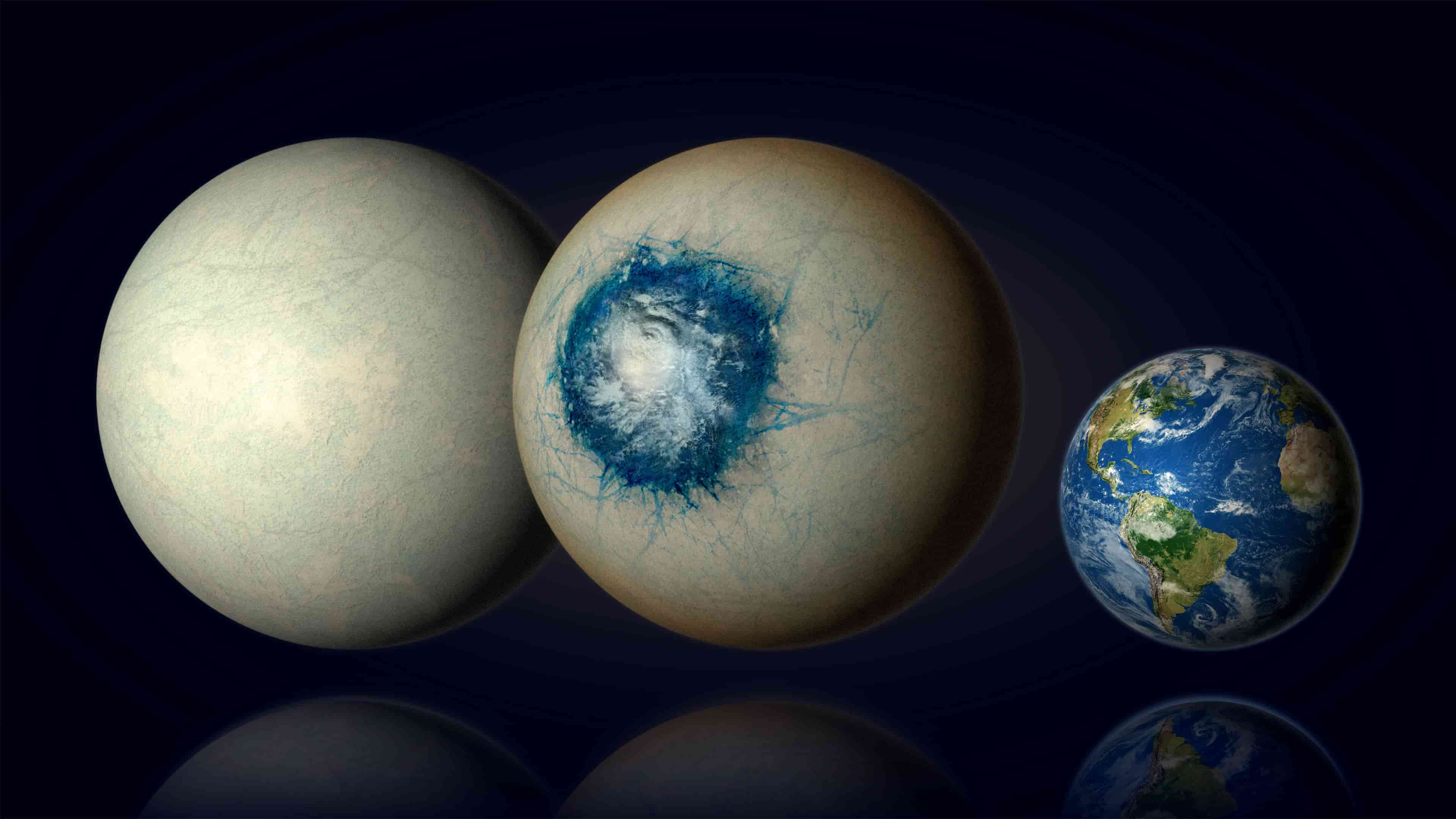American University Scientist Contributes to New Findings About Exciting Exoplanet

As space scientists search for water on exoplanets beyond our solar system, the exoplanet LHS 1140 b stands out as one of the most exciting. New research from a team that includes American University Research Assistant Prof. Thomas Fauchez finds a hint of the presence of a nitrogen-rich atmosphere on LHS 1140 b. The team also rules out the possibility of the exoplanet being a "mini-Neptune," suggesting it is more likely rocky and thus potentially capable of supporting habitable conditions.
“If confirmed by follow-up observations, this would be the first time an atmosphere has been found on a rocky planet in the habitable zone outside the solar system,” Fauchez said. “In the solar system only two planets are in this category today, Earth and Mars, which would bring the total of habitable zone rocky planets with an atmosphere that we know in the universe to… three!”
One of the closest exoplanets to our solar system, LHS 1140 b is about 48 light-years away in the constellation Cetus. LHS 1140 b orbits a low-mass red dwarf star much smaller than our sun. It lies within its star’s habitable zone, or the “Goldilocks Zone,” the term scientists use to describe the region around a star where the temperature is neither too high nor too low, allowing for the possibility of liquid water on a planet's surface.
The team’s new findings will soon publish in The Astrophysical Letters Journal. Charles Cadieux, Ph.D. student at the Trottier Institute for Research on Exoplanets and the Université de Montréal, is the paper’s lead author. The new findings are based on observations from transits of the exoplanet that occurred last December, when researchers secured time on the James Webb Space Telescope. The James Webb Space Telescope is the world’s premier space science observatory, the largest ever constructed. In an orbit 1 million miles away from Earth, the tennis court-sized Webb studies every phase in the history of our universe, ranging from the first luminous glows after the big bang, to the formation of solar systems capable of supporting life on planets like Earth. Launched on Dec. 25, 2021, Webb is an international program led by NASA with its partners, European Space Agency and Canadian Space Agency.
Researchers observed two transits of the exoplanet passing in front of its star with the Canadian-built NIRISS, or Near-Infrared Imager and Slitless Spectrograph, instrument onboard the Webb Telescope. The new paper’s findings build on earlier research about the physical characteristics of LHS 1140 b by Cadieux and others, including American University scientist Fauchez.
 Temperate exoplanet LHS 1140 b may be a world completely covered in ice (left) similar to Jupiter’s moon Europa or be an ice world with a liquid substellar ocean and a cloudy atmosphere (center). LHS 1140 b is 1.7 times the size of our planet Earth (right). (Credit: B. Gougeon/UdeM)
Temperate exoplanet LHS 1140 b may be a world completely covered in ice (left) similar to Jupiter’s moon Europa or be an ice world with a liquid substellar ocean and a cloudy atmosphere (center). LHS 1140 b is 1.7 times the size of our planet Earth (right). (Credit: B. Gougeon/UdeM)
Astronomers gain insight from telescope data, as they detect changes in the star’s light when the exoplanet transits. But they can’t rely on observations alone, and modeling provides verification and improves accuracy of the results. Fauchez used the Planetary Spectrum Generator, a tool created at NASA Goddard Space Flight Center, where Fauchez conducts research. The PSG was created by Goddard colleague Geronimo Villanueva, with support of Fauchez, Sara Faggi and Vincent Kofman. Like Fauchez they are all research assistant professors at AU College of Arts and Sciences’ Integrated Space and Science Technology Institute.
With the PSG, Fauchez analyzed the Webb data with simulations of transmitted light spectra. Light spectra are ranges of different wavelengths of star light either transmitted, emitted or reflected through a planet’s atmosphere. By comparing these spectra under various atmospheric conditions, he aimed to identify which scenario best matched the telescope observations. The simulations ruled out the mini-Neptune scenarios and confirmed LHS 1140 b as a super Earth—a large, rocky exoplanet more massive than Earth. Further support for the finding of a nitrogen atmosphere is a model showing the presence of Rayleigh scattering by nitrogen molecules -- the same process by which molecules in Earth’s atmosphere (including nitrogen) scatter light and make our sky blue, Fauchez said.
Researchers estimate that 10 to 20 percent of the exoplanet may be composed of water. As a possible water world, LHS 1140 b likely resembles a snowball or ice planet with a potential liquid ocean. If it has an Earth-like atmosphere, it would be a snowball planet with a bull’s-eye ocean about 4,000 kilometers in diameter, equivalent to half the surface area of the Atlantic Ocean. The surface temperature at the center of this alien ocean could even be a comfortable 20 degrees Celsius.
Confirming the presence and composition of LHS 1140 b's atmosphere and discerning between the snowball planet and bull’s-eye ocean planet scenarios require further observations with the Webb Telescope and other large, high-powered telescopes in space or on the ground.
“The current hint of a nitrogen-rich atmosphere begs for confirmation with more data,” says René Doyon, principal investigator of the NIRISS instrument. “We need at least one more year of observations to confirm that LHS 1140 b has an atmosphere, and likely two or three more to detect carbon dioxide.” The Webb Telescope will likely have to observe this system at every possible opportunity for several years to determine whether LHS 1140 b has habitable surface conditions, Doyon added.
